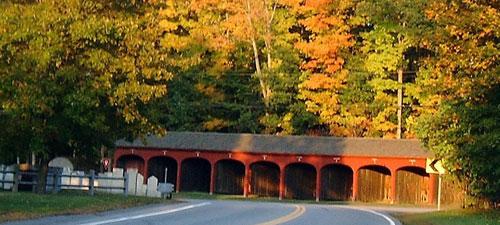Planning & Zoning Information
Before you build anything on your property or change an existing use or material, you should review the current Zoning ordinance, available in DOC and PDF format at the bottom of this page, along with the current appendicies. Check with the Planning & Zoning Administrator if you have questions or to see if you need a permit. If you do, you should download the Zoning Permit Application & Instructions and pay the appropriate fee. The Administrator can help you. You should review the Zoning Ordinance (links to appendices at bottom of page) for limitations. If you would like to place a sign on your property, you should complete a Sign Permit Application. The sign ordinance is located within the Zoning Ordinance. If your proposal is located within a floodplain, the Flood Plain Development Ordinance will also apply. The flood plain maps in the Town office show the flood areas on each lot.
If the Planning & Zoning Administrator cannot approve your application, you can appeal to the ZBA. The Administrator will help you. You must complete an Application for Appeal, provide a list of abutters and easement holders from the Town’s list, and submit $40 for the hearing costs. You should also refer to “Your Guide to the ZBA and the Appeal Hearing Process” for more information.
If you are building a new house or increasing the number of bedrooms beyond the capacity of your State approved septic system, you will need to hire a septic system designer to help you gain State approval for a new septic design. You can view a list of State approved septic designers by town on the NH Department of Environmental Services website. A town building permit is also required for your septic system.
To insure you are building according to the New Hampshire Residential Energy Code, you must also complete an Application for Certificate of Compliance for the New Hampshire Public Utilities Commission if you are:
- Building a new house,
- Constructing a commercial structure under 4,000 square feet;
- Plan to spend more than 50% of the current value of the structure altering the structure;
- Winterizing a seasonal home or part of an existing structure, such as finishing a room over a garage; or
- Constructing an addition with more than 150 square feet of total floor space.
You may be exempt if you are siting a mobile home or modular home, making no provision for electric or fossil fuel, or renovating or adding to a certified historic building. The application must be submitted to the State for approval, and a copy of the approval must be given to the town. If a New Hampshire certified architect is involved in your project, the architect may write a standard letter in lieu of completing the above application. The architect’s letter should be given directly to the town.
If your proposal impacts wetlands, you will need to complete the appropriate New Hampshire Wetlands Application. These impacts include repair and replacement of structures, first time installation of a dock on a pond or the river, installation of a driveway culvert, pond construction, dredging an existing pond, beach construction or replenishment, fill to create useable land, or any project impacting wetlands or surface water. You can pick up an application form from the Town Clerk’s office. She will take the application and the appropriate fees and submit it to the State for you. You can contact the New Hampshire Wetlands Bureau at 271-2147. The Town of Lyme also has a wetlands protection buffer of 100’.
The New Hampshire Comprehensive Shoreland Protection Act was created to protect the integrity of public waters. This act regulates development within 250 feet of the Connecticut River, Post Pond, Pout Pond, Trout Pond, and Reservoir Pond in Lyme. There are varying buffer areas depending upon the proposed activity or development. Generally, you cannot build closer than 50’ to the water body, and you must leave a woodland buffer of 150’not including the building area. The Town of Lyme also has a shoreland protection buffer from all surface water.
Both the federal government and the State of New Hampshire have regulations to protect surface waters by controlling soil erosion and managing stormwater runoff from developed areas. If you are disturbing over one acre of soil, the U.S.
Environmental Protection Agency (EPA) National Pollution Discharge Elimination System (NPDES) Stormwater Program applies to your proposal. You must submit a Notice of Intent to the EPA. New Hampshire’s The Alteration of Terrain Program requires a permit whenever a project proposes to disturb more than 100,000 square feet (about 2.3 acres) of terrain (50,000 square feet if within the protected shoreland).


